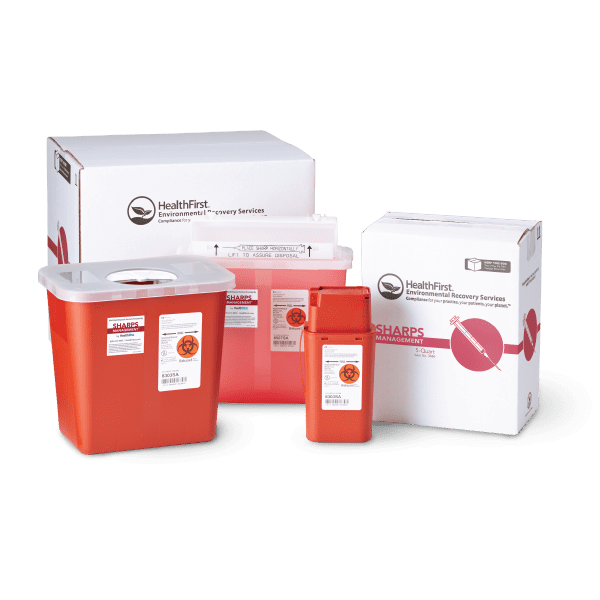Safe and Secure: The Conclusive Option for Specialist Medical Waste Removal Provider
Safe and Secure: The Conclusive Option for Specialist Medical Waste Removal Provider
Blog Article
Checking Out Different Waste Disposal Options for a Cleaner Setting
In the pursuit of a cleaner setting, the management of waste disposal has emerged as an essential focal point for sustainable growth. With a multitude of waste disposal choices readily available, ranging from standard landfill techniques to cutting-edge waste-to-energy innovations, the selection of exactly how we manage our waste has significant implications for our earth's well-being.
Recycling Methods
Applying reliable reusing approaches is essential in minimizing waste and promoting sustainability in our environment. Reusing entails the process of transforming waste products into recyclable challenge stop unnecessary disposal. Among one of the most usual recycling techniques is worldly healing, where products like paper, glass, plastic, and metal are gathered, sorted, and processed to produce new items. This procedure not just saves all-natural resources but also reduces power intake and greenhouse gas exhausts connected with creating new products from the ground up.
One more vital recycling approach is composting, which involves breaking down natural waste like food scraps and backyard trimmings right into nutrient-rich dirt. By including these numerous reusing approaches right into our waste management techniques, we can considerably lower our environmental impact and move in the direction of a much more lasting future.

Composting Techniques
Effective waste monitoring practices, such as reusing approaches, lead the means for a cleaner environment, and currently, changing the emphasis to 'Composting Techniques', we explore lasting means to decompose natural waste for ecological benefit. medical waste removal.
Composting is a natural process that changes natural waste, like food scraps and backyard trimmings, into a nutrient-rich soil modification. The secret to effective composting lies in developing the ideal equilibrium of environment-friendly materials, such as fruit and veggie scraps, and brown materials, like dried twigs and fallen leaves. These products decompose with the help of bacteria, breaking down the waste into useful garden compost.
There are numerous composting techniques offered to suit different demands. Standard yard composting entails layering organic products in a container or heap and routinely transforming the mix to freshen it. Vermicomposting, on the various other hand, uses worms to damage down organic matter right into garden compost (click here). For those with restricted space, interior composting systems offer a practical option. By making use of composting methods, we can minimize the amount of waste sent to land fills while creating a helpful item for enhancing soil and sustaining plant development.
Incineration Cons and pros
Incineration, as a waste disposal approach, presents both benefits and downsides that merit mindful consideration in the realm of lasting waste monitoring methods. On the favorable side, incineration can considerably decrease the volume of waste, minimizing the requirement for garbage dump space and potentially decreasing greenhouse gas exhausts.
However, there are noteworthy disadvantages to incineration. One significant worry is the possible release of hazardous toxins into the air, such as dioxins, heavy steels, and particle matter, which can have negative effects on human wellness and the atmosphere. Furthermore, the high preliminary investment and operational expenses of incineration facilities position financial challenges, making it a much less economical choice contrasted to various other waste administration techniques. Cautious surveillance and guideline are vital to alleviate these unfavorable influences and optimize the advantages of incineration as part of an extensive waste management method.
Land Fill Management Techniques
Garbage dumps play a critical function in waste management and ecological conservation by supplying a containment system for the disposal of strong waste products. Reliable land fill monitoring strategies are necessary to reduce ecological impacts and make certain the lasting sustainability of these waste disposal sites. One essential technique appertains waste compaction to make the most of using offered room within the garbage dump (click here). By condensing the waste, the quantity is decreased, allowing for even more waste to be suited with time.
In addition, the execution of day-to-day cover methods is vital in decreasing odors, avoiding litter, and decreasing the attraction of insects. Covering the disposed waste at the end of daily helps to have smells and protect against prospective environmental contamination. In addition, the monitoring of land fill gas emissions and leachate degrees is essential in ensuring that ecological standards are met which any kind of potential dangers to surrounding ecological communities are reduced.

Waste-to-Energy Technologies
Among the innovative methods to squander administration entails taking advantage of Waste-to-Energy modern technologies to transform strong waste into functional power resources. Waste-to-Energy (WtE) technologies incorporate a series of processes that aim to remove energy from waste materials with thermal, chemical, or biological means. This conversion procedure not only minimizes the volume of waste that winds up in garbage dumps however likewise generates important energy resources such as electrical energy, warmth, or biofuels.
There are numerous approaches of Waste-to-Energy conversion, consisting of incineration, pyrolysis, and gasification. Incineration entails burning waste at high temperature levels to generate warmth and power. Gasification transforms waste right into a syngas, which can be utilized for power generation or chemical production. Pyrolysis breaks down natural materials using high temperature levels in the absence of oxygen, creating gas, char, and bio-oil.
Implementing Waste-to-Energy modern technologies can assist minimize ecological problems linked with conventional garbage disposal techniques while simultaneously offering a renewable resource source. Nonetheless, mindful consideration should be offered to discharges control and making sure the sustainability of feedstock supplies for these innovations to be really advantageous for a cleaner setting.

Final Thought
In verdict, discovering numerous garbage disposal alternatives such as recycling, composting, incineration, land fill monitoring, and waste-to-energy technologies is important for advertising a cleaner atmosphere - click here. Each approach has its own advantages and difficulties, yet by using a combination of these methods, we can work in the direction of minimizing the quantity of waste that winds up in garbage dumps and eventually add to a more sustainable future for generations ahead
With moved here a plethora of waste disposal options offered, varying from conventional garbage dump techniques to cutting-edge waste-to-energy innovations, the choice of how we manage our waste has far-reaching effects for our planet's wellness. medical waste removal.Incineration, as a waste disposal approach, provides both benefits and negative aspects that warrant cautious factor to consider in the realm of lasting waste management practices.Garbage dumps play an important function in waste management and environmental preservation by supplying a containment system for the disposal of solid waste products. By condensing the waste, the quantity is decreased, allowing for more waste to be suited over time
One of the ingenious strategies to lose management involves taking advantage of Waste-to-Energy modern technologies to convert strong waste right into functional power resources.
Report this page